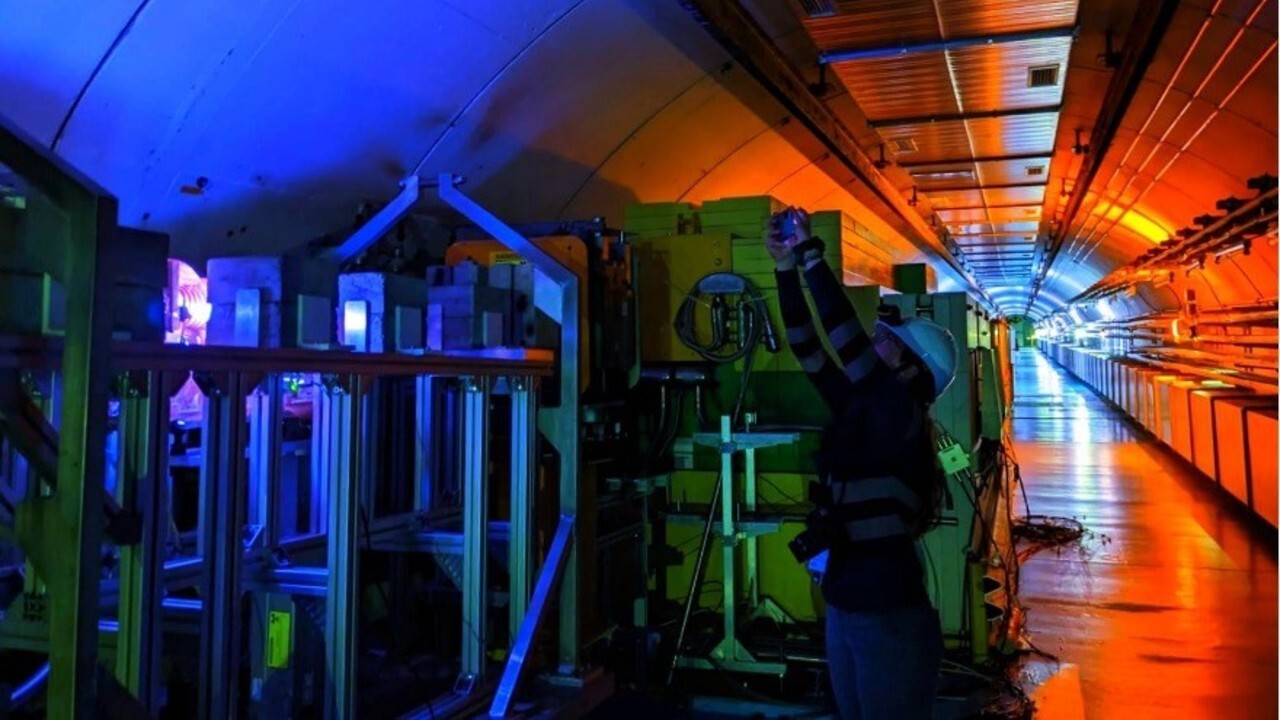In a first-of-its-kind experiment, scientists have recreated “cosmic fireballs” here on Earth in a particle accelerator.The experiment aimed to investigate the stability of jets of high-temperature gas or plasma blasted at Earth by feeding supermassive black hole-powered galactic engines called blazars. This could, in turn, solve the mystery of hidden magnetic fields and missing high-energy gamma-rays.
Scientists from the University of Oxford and the Science and Technology Facilities Council’s (STFC) Central Laser Facility (CLF) teamed up and turned to the Super Proton Synchrotron based at CERN’s HiRadMat (High-Radiation to Materials) facility to generate electron–positron pairs. They then blasted these matter-antimatter counterpart pairs through 3.3 feet (1 meter) of plasma, recreating conditions in the jets of feeding supermassive black holes known as blazars. This enabled them to simulate some of the universe’s most extreme physics.
You may like
What the blazes?
Blazars are a subset of active galactic nuclei (AGN), central regions of galaxies that are dominated by ravenously feeding supermassive black holes with masses millions or even billions of times that of the sun. These cosmic titans are surrounded by swirling flattened clouds of gas and dust called accretion discs that glow brightly due to friction generated by the immense gravitational influence of the central black hole.
These accretion disks gradually drop matter into the maw of the black hole, but not all of the material surrounding black holes is consumed. Powerful magnetic fields channel some of the matter to the poles of the black hole, where it is accelerated to near light-speed and blasted out as twin collimated jets of plasma. Blazar is the name given to AFNs that point one of these jets of plasma right at Earth. These jets produce intense gamma-ray radiation, which can be detected here on Earth by ground-based telescopes. But something is missing.
When these gamma-rays blast through intergalactic space, they scatter off photons in the background light from stars, creating matter in the form of electrons and antimatter in the form of positrons. These matter-antimatter pairs should scatter from a cosmic fossil field of radiation that ubiquitously fills the cosmos, called the “cosmic microwave background” or “CMB,” which is a leftover from an event that occurred shortly after the Big Bang.
This scattering should create lower-energy gamma-rays that could be picked up by space-based gamma-ray telescopes such as the Fermi spacecraft. However, thus far, such a detection of low-energy gamma-rays has eluded these instruments.
Help! Our gamma-rays are missing!
There are a few theories as to why low-energy gamma-rays may be “missing.” One idea suggests that the electron-positron pairs are deflected by weak intergalactic magnetic fields and that this bounces low-energy gamma-rays out of our line of sight. Another suggestion is that these matter-antimatter pairs become unstable as they travel through the extremely sparse matter scattered between galaxies. This could result in small fluctuations in the current of these jets that generate magnetic fields that cause further instability. The net result would be the dissipation of the beam’s energy. Another possibility is that there is a relic magnetic field that exists between galaxies which remains from the early universe and disturbs low-energy gamma-rays.
In testing these first two concepts, the team of scientists arrived at some very enlightening and surprising results. The team had expected the beam to spread out and become disrupted. However, what they actually observed was a beam that maintained its narrow shape with little disruption and an absence of disruption generating magnetic fields. The implications of this are that plasma beam instabilities are too weak to explain missing low-energy gamma-rays. This could then support the idea of a relic magnetic field existing in the intergalactic medium, the matter that drifts between galaxies.
The Fireball experiment installed in the HiRadMat irradiation area. (Image credit: Gianluca Gregori.)
The findings raise additional questions. In particular, as the early universe was extremely uniform, it is unknown how such a relic could have been seeded in the primordial cosmos. Answering this conundrum may involve searching for physics beyond the Standard Model, possibly using future facilities such as the Cherenkov Telescope Array Observatory (CTAO).
“It was a lot of fun to be part of an innovative experiment like this that adds a novel dimension to the frontier research being done at CERN – hopefully our striking result will arouse interest in the plasma astrophysics community to the possibilities for probing fundamental cosmic questions in a terrestrial high-energy physics laboratory,” Subir Sarkar, team member and University of Oxford researcher, said.
The team’s research was published on Monday (Nov.3) in the journal PNAS.


